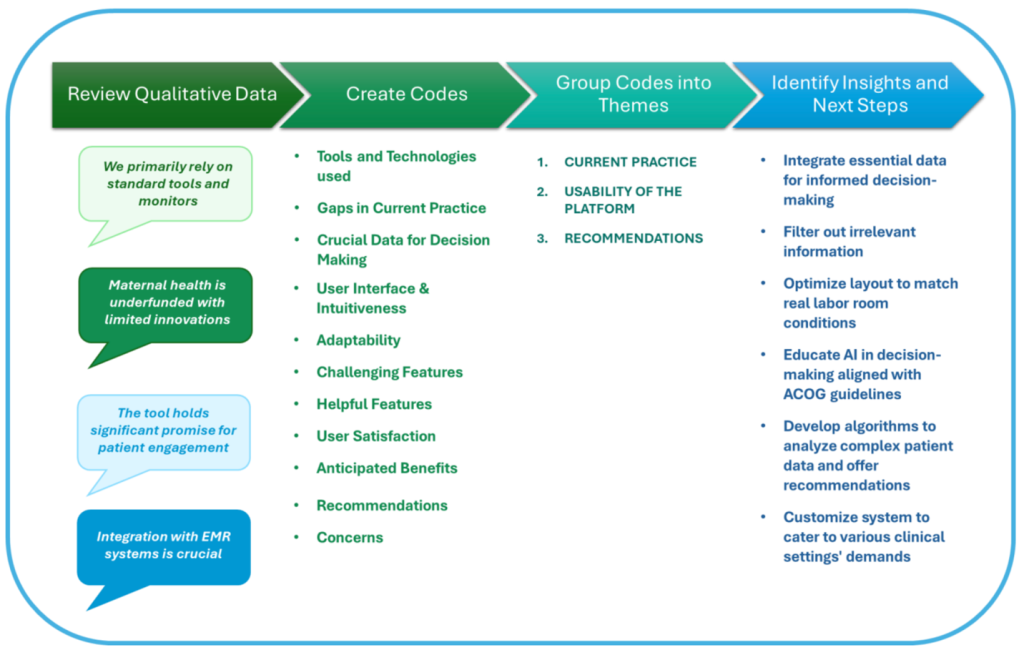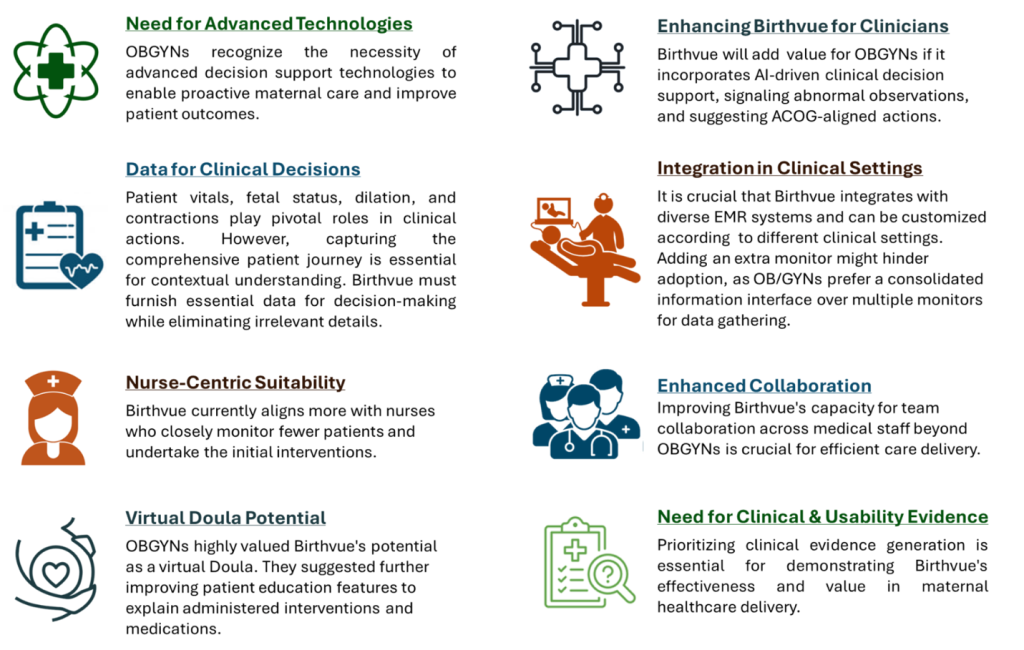HITLAB Team • March 29, 2024

In the landscape of maternal healthcare, the United States grapples with a formidable challenge — one of the highest maternal morbidity and mortality rates among developed nations. Shockingly, 700 women lose their lives annually due to pregnancy complications, a staggering statistic that highlights the urgent need for innovative interventions. Prolonged labor emerges as a critical factor in this concerning scenario, amplifying the call for groundbreaking solutions.
Birthvue, an AI-powered platform, steps onto this healthcare stage with a mission to redefine labor and delivery care. Recognizing the pressing need for change, Birthvue adopts a patient-centered approach, offering a comprehensive solution to bridge the communication gap between pregnant women and healthcare professionals. This platform not only seamlessly integrates with maternal monitors but also employs a proprietary AI algorithm, delivering real-time, easily understandable updates on labor progression. This proactive approach empowers expectant mothers by providing personalized guidance, relaxation techniques, and a supportive digital toolkit, ensuring their active participation in the childbirth journey. The autonomous platform aims to help women maximize their performance and reduce factors within their control that can complicate or prolong labor. Birthvue strives to revolutionize the entire process by enhancing the overall experience and outcomes for both mothers and babies.
HITLAB, a leading healthcare and innovation technology lab, based in New York, recently partnered with Birthvue to complete a groundbreaking user feedback study that sheds light on various aspects of OB/GYN practices, current tools and technologies in labor care, the perceived usability of Birthvue, and recommendations for improvement. The study involved interviewing OB/GYNs to shed light on the perceived usability of the Birthvue platform by OB/GYNs, emphasizing its intuitive interface, adaptability, and valuable features such as visual indicators.
To analyze the interview data, a deductive thematic analysis approach was employed, focusing on identifying recurring themes, patterns, and key insights within the participants’ responses. Codes were developed based on the predetermined topics covered in the structured interviews. These codes were crafted to comprise the current gaps in labor care and specific aspects of Birthvue technology, including user interface experience, perceived usability, and potential impact on clinical practice. The coded data were then systematically organized, allowing the identification of thematic patterns. Similar codes from all interviews were iteratively reviewed and grouped into categories, facilitating the identification of overarching themes and trends across participants’ feedback.

Key Findings
OB/GYNs primarily rely on traditional tools and standard monitors in their practices, expressing a clear need for advanced technologies to improve early issue detection and outcomes for mothers and babies. A significant challenge they face involves effectively communicating medical procedures and educating patients about ongoing care, consuming considerable consultation time. Birthvue is recognized by OB/GYNs as a tool capable of enhancing patient education, facilitating independent access to understanding procedures and treatments during labor.
Acknowledging Birthvue’s AI-powered clinical decision support, OB/GYNs emphasized the necessity of adhering strictly to ACOG guidelines for improving the tool’s efficacy and enabling access to raw data rather than solely relying on AI. They appreciated Birthvue’s potential as a Virtual Doula and its suitability for monitoring of patients by nurse workflow.
Regarding usability, OB/GYNs acknowledged Birthvue’s potential to empower patients with crucial information about labor progression. They foresee it aiding clinicians in managing challenging conversations, particularly with patients hesitant about C-sections. Expectations align for Birthvue’s benefits in patient empowerment and facilitating OBGYN communication, garnering high ratings for its comprehensive user interface and potential to empower patients. On the other hand, they expressed a lot of improvement scope within the clinician interface as it needs to incorporate critical data points like fetal measures, and possibly build a robust clinical decision tree based on clinical guidelines, patients’ medical history, preferences, and treatment journey thus far.
OB/GYNs anticipate significant benefits from Birthvue’s AI capabilities, foreseeing it as a potential warning system for labor complications. They envision its utility for clinicians in analyzing labor journeys and providing AI-generated recommendations for interventions. Additionally, they highlighted its potential success as a virtual doula and aiding patients with personalized guidance.
While all OB/GYNs found Birthvue’s interface intuitive, concerns arose regarding practical application of the offered dataset. Nonetheless, there was consensus on Birthvue’s value in empowering patients throughout labor. Interestingly, 60% expressed that Birthvue might better suit nurses due to their primary caregiving role. However, universal optimism exists about Birthvue’s potential to empower patients and enhance clinician-patient interactions, albeit with reservations about aiding clinical decision-making.

Conclusion
In conclusion, OB/GYNs expressed optimism about Birthvue’s potential impact on improving maternal healthcare, envisioning scenarios where its integration could be invaluable, provided it incorporates AI-powered clinical decision support aligned with ACOG guidelines. This study offers pivotal insights for refining future product development, paving the way for innovative solutions and enhanced labor care.
Find out more about
Explore Recent Posts


